Lynn Salvo, the oldest woman to cycle across Europe from the North Cape to Tarifa
On June 19, 2024, in thick fog, cold rain, and gusty 30 mph crosswind, I posed for the start photo at the globe on the cliff overlooking the Arctic Ocean at Nordkapp, Norway. I was poised to begin my attempt to set a record for the oldest woman to bicycle across Europe.
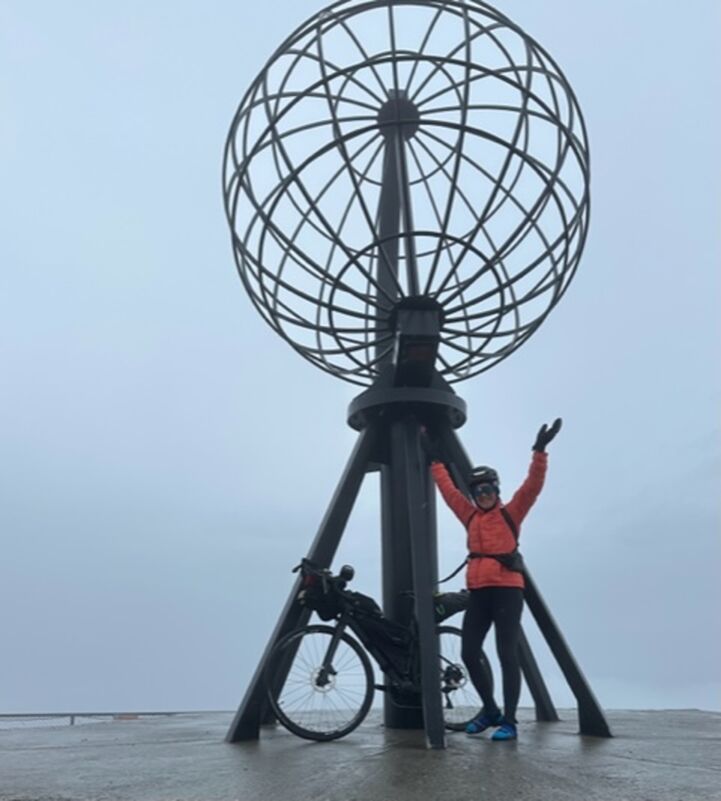
I had been trying to get to that start point for five years. My previous two plans were thwarted by COVID in 2020 and Russia’s invasion of Ukraine in 2022. In 2024, as I planned the trip for the third time, it seemed closer to realization. As the start neared, I wondered what might prevent me from beginning this time. For a U.S. citizen, a stay in the European Union is limited to 90 days, but I needed more than that to complete the trip. Just weeks before departure, aided by a helpful embassy staffer, Italian citizenship was granted based on my marriage to my Italian husband over 50 years ago. Another crisis loomed when my bike’s shifters completely failed and could not be repaired. A new bike was built a week before departure.
Then, I was on the plane to Oslo, pinching myself to be sure I was not dreaming. Upon landing, a screen displayed the length of the flight – 5,948 km (3,697 miles). I let out a little gasp. The planned cycling route was 1,000 km longer than that.
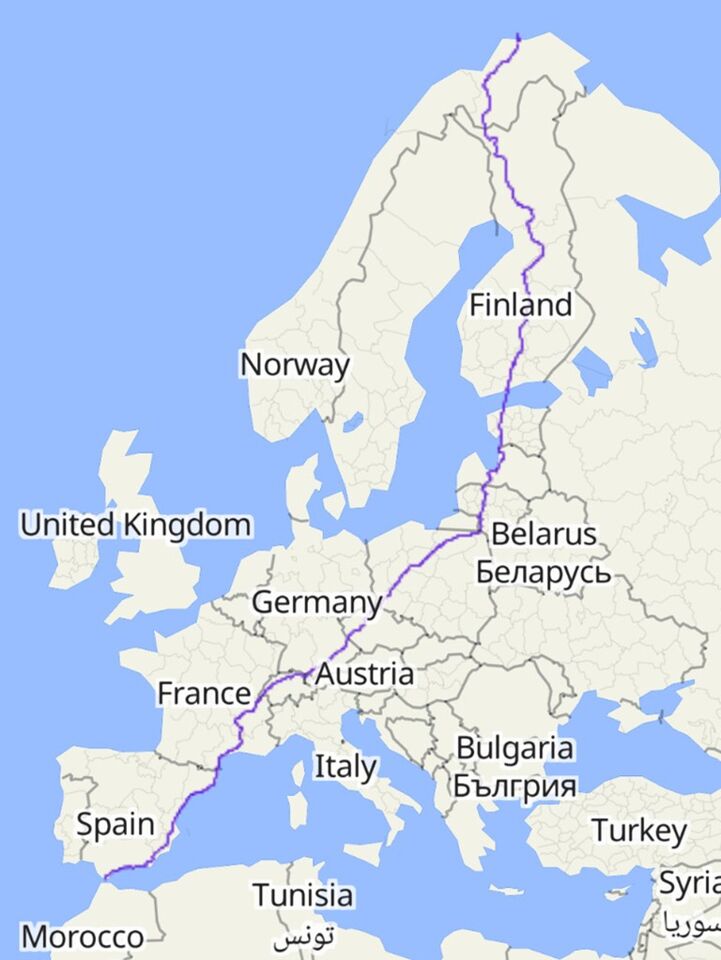
On 19 June, Callyn Worcester, my co-cyclist, and I took a bus with about 40 hardy cyclists excited to begin the North Cape to Tarifa (NCT) race. As we pondered the adventure that lay before us, I bonded with Sarah Cinquini, Mamma Volante (Flying Mom), age 47. The racers could not start before midnight, but the deteriorating weather conditions led Callyn and me to make an earlier getaway. At 8:54 PM, we ventured into the wind, rain, and cold. The fog prevented us from seeing the Arctic Ocean. I asked myself, “Is this what I’ve wanted for five years?” Callyn said it was the worst ride she’d ever done in her life.
We rode self-supported. I cycled on a feather-light carbon Cannondale Synapse in a bikepacking setup. My bike, my stuff, and I totaled 160 pounds. Callyn rode a sturdy steel bike with panniers. My new bike was an 11-speed with Continental Grand Prix 4 Season 32 mm tires. Quickly, her name became Europa. Her tires carried me over 6,400 km (4,000 miles) before my first and only flat. I wore Shimano S-Phyre shoes – I loved my sapphire slippers. However, over a two-year period, without realising it until I was well into this trip, my tight left shoe caused a large corn to develop on my foot. By the time I got to Geneva, it was painful. I tried medicating it to wear down the skin, but developed a wound instead. The pain became excruciating. Days before I finished, I cut a slit, then a flap, in the shoe to relieve pressure.
There were two major parts to the ride. The first 4,700 km (2,900 miles) were self-supported with Callyn. Her time in Europe was limited by Schengen rules. A new team arrived in Geneva, including Bruce (Boomer) Cabarle, Beth Donahue, and Mary Sattazahn. Beth drove the support car. Boomer and Mary rode with me. Unfortunately, on her first day, Mary crashed in an orchard, was taken to a hospital, treated and stabilised, then flew back to the US for surgery and further medical attention. She is still healing, aided by her great attitude. I cycled the remaining 2,250 km (1,400 miles) with Boomer.
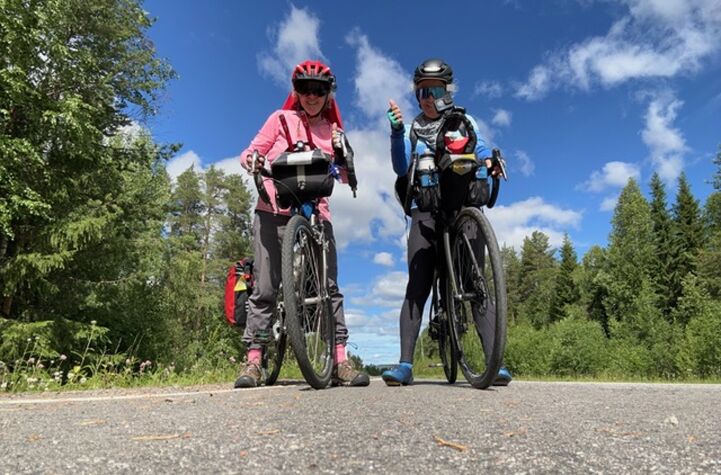
No stranger to long distance cycling, I have completed six transcontinental rides in nine years --- four across the US, one across Canada, and now across Europe. For each, I worked from aspirational routes. In the US, there is the Great American Rail Trail. My guide across Canada was the Trans Canada Trail. EuroVelo is a vast network of bike routes that crisscross Europe. All are promising visions.
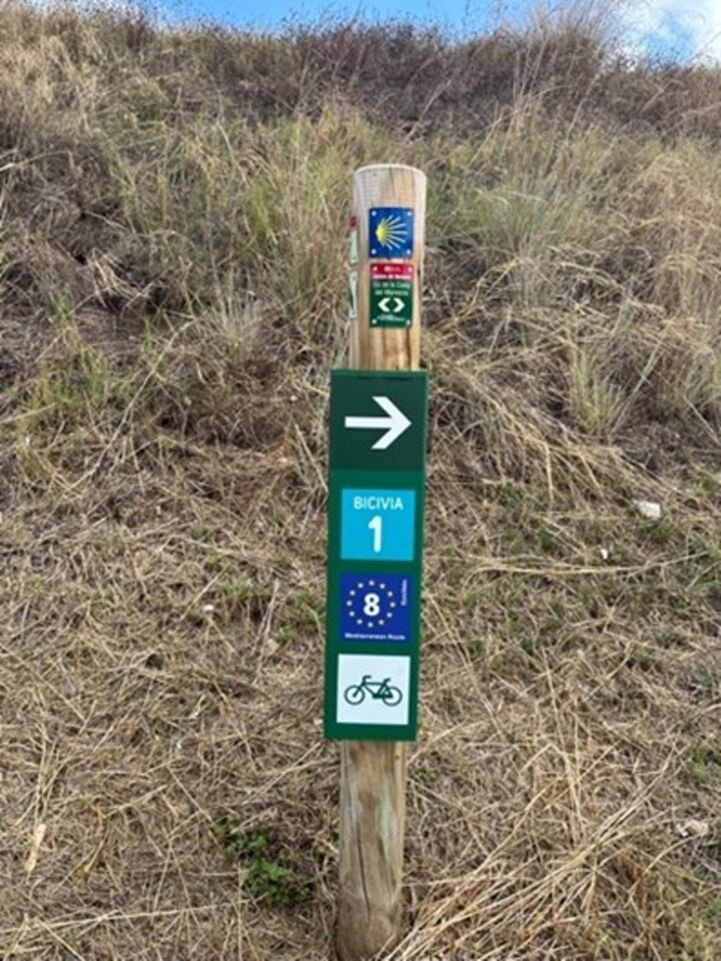
To plan the trip, Callyn and I started from a North Cape Tarifa track made by Andy Buchs, the organiser of the NTC race. We polished the routes in RideWithGPS. In OSM Cycle Mode, bike trails show up clearly. We always sought EuroVelo routes that ran the way we needed to go. However, for a ride of such length and duration, many of the itineraries suggested by EuroVelo were too meandering to be practical. In addition to EuroVelo we found numerous local routes such as Green Velo in Poland, Dolce Via in France, and Camino del Cid in Spain. Where they overlap, I feel that co-signage would be beneficial to all, like this sign north of Barcelona.
The development of bike routes is variable. They often follow backroads that have been replaced by highways. Consequently, even if they are less trafficked, they can be disjointed, hilly, and poorly maintained (patches over patches). The level of difficulty is also inconsistent. Some routes are easy, flat, and well-serviced like the EuroVelo 17 - Rhone Cycle Route, while others take you on hilly gravel paths better suited to experienced mountain bikers. I was unable to tell them apart with my apps.
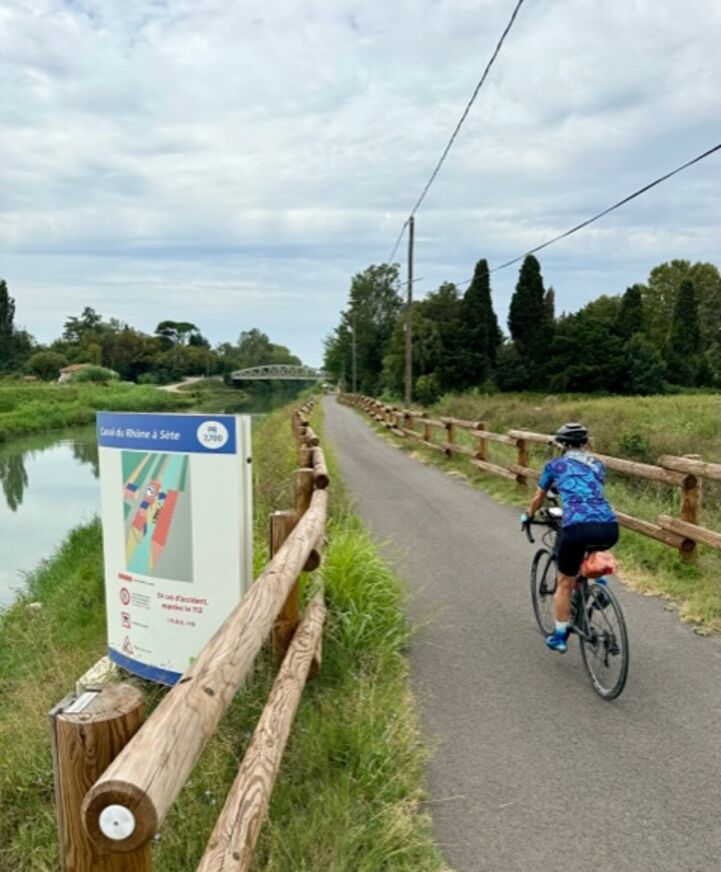
My favorite EuroVelo segments were on EuroVelo 8 - Mediterranean Route. I deeply enjoyed the paved, scenic, quiet pass from Le Boulou, France, to La Jonquera, Spain. From Oropesa del Mar toward Valencia, Spain, I soaked up soul-satisfying views along a gorgeous rail trail carved out of the rock by the Mediterranean coast. On my last day, I savored a long climb west of Algeciras, Spain, on a quiet paved trail separated from the road.
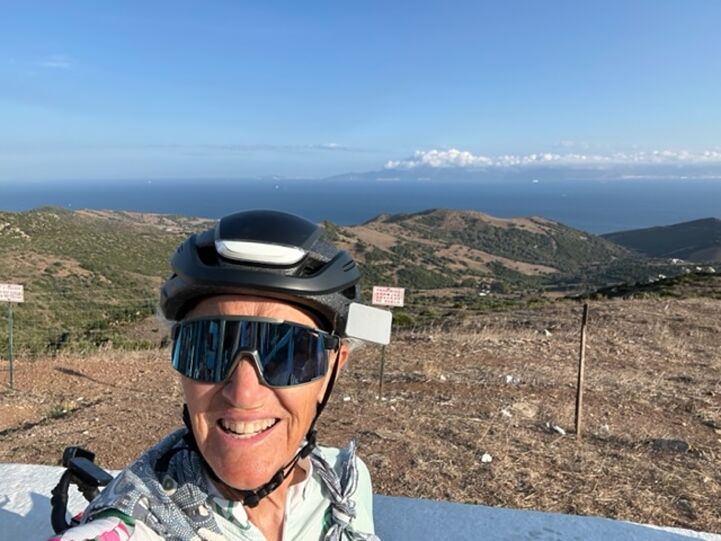
The theme of my bike rides is peace. For that purpose, I included stops at a peace monument in each of the twelve countries on my route. In Munich, I visited the Peace Angel monument, not far from where Hitler gave speeches. It was placed in 1899, well before Hitler ravaged Europe. Even though it didn’t stop Hitler, I prefer that we have aspirations, even if we haven’t fulfilled them yet. Other stops were actually places of horror, such as Dachau, Germany, that eventually led to improvement in the human condition. A few were genuine sites of peace. The most memorable was the city of Le-Chambon-sur-Lignon in France, situated on a plateau where many families sheltered Jewish children during World War II. The house where we stayed was one such shelter, and its current owners, Veronique and Renaud, cherished its heritage. I had been in touch with Veronique since 2020, the first time I planned the trip, and we felt like old friends when we finally met. Renaud was an amateur chef who learned to cook at his grandmother’s knee. Her one rule: You must eat what you cook. The two dinners that Renaud presided over were hours-long works of art.
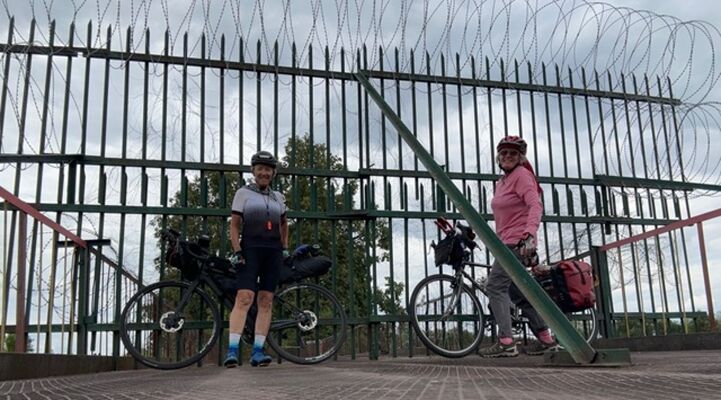
Surprisingly, Spain was the hardest part of the trip. I had planned a route that veered somewhat inland from the coast to save time, but a local cyclist warned us that the inland route was difficult. Indeed, one day’s route had 27 kilometres of gravel. At the last minute, instead of embarking on that gravel route, Boomer and I elected to return to the coast. At 11 PM, we created a route for the next morning. It landed us at a dead end in a dry reservoir from which we had to backtrack. In general, we enjoyed the N340 as a through secondary highway, but it blended with the fast highway A7 as we got to the south of Spain. The highway cut off neighborhoods from one another. To get through, we crossed the highway numerous times on pedestrian bridges. We never knew when a route would be blocked by road construction or a community gate. Indeed, there were several route failures that required reroutes on the fly.
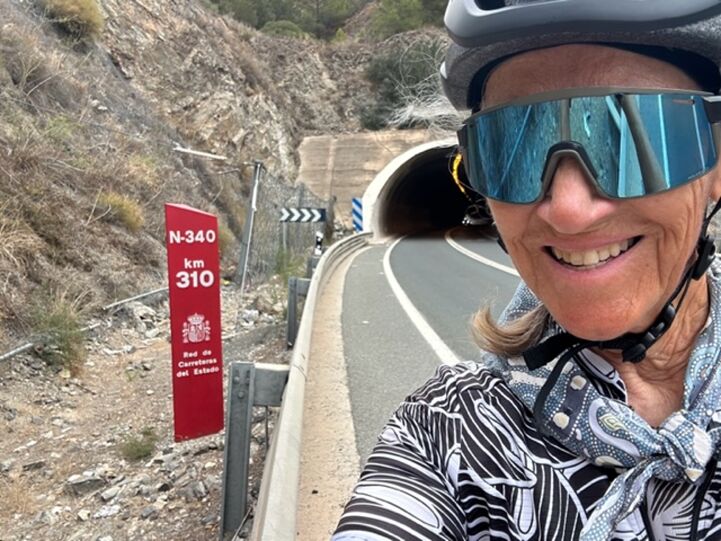
I turned 75 on 21 September, the International Day of Peace. It was a Saturday and the eve of the finish. I began the day on a beach boardwalk. A kind young lady warned me that bikes could not be ridden on it on the weekend and that she’d seen police ticketing cyclists. Walking my bike was painful because of the corn, so I coasted without really riding when I could and walked when there were pedestrians around.
22 September was the final day. It, too, was challenging. I encountered a field of rocks and blocked roads. I had to find my way around them in the moment. After nearly eleven hours of cycling, at 7:32 PM, I arrived at the gate to Isla de las Palomas in Tarifa, Spain, as the evening wind rose. I had traversed Europe from the Arctic’s gusts to windy Tarifa, cycling from the solstice to the equinox.

I am grateful that I was able to ride across Europe at the age of 75. I cycled 6,968 km (4,329.5 miles) in 12 countries in 95 days. For perspective, courageous Sarah Cinquini, who I met on that windy evening in Nordkapp, completed her crossing in just 29 days. Now, I rest, savouring the memories of my summer cycling across Europe.
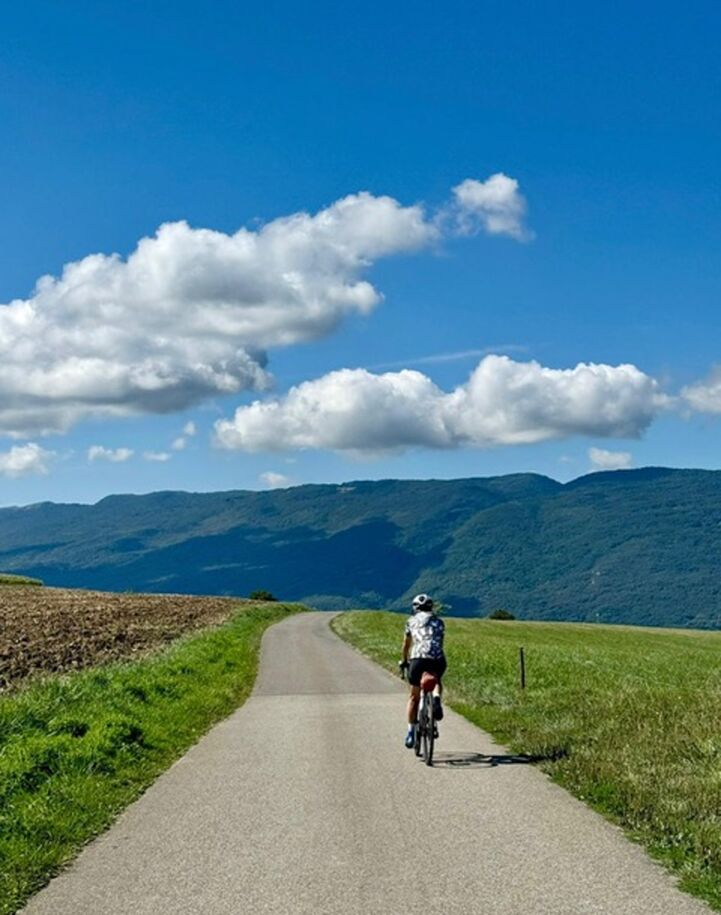
Written by Lynn Salvo, lifeislikeabike.wordpress.com